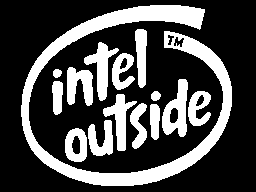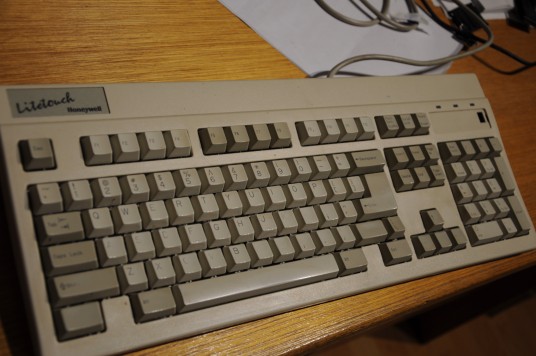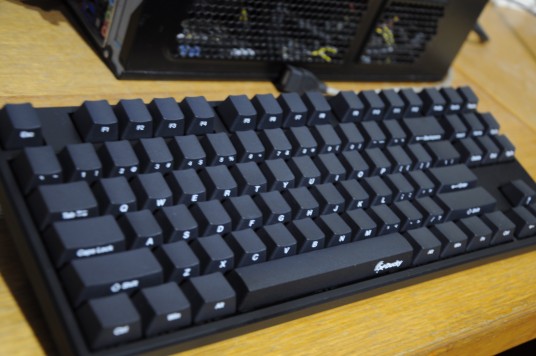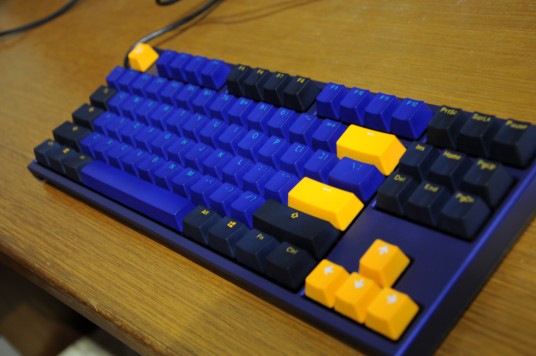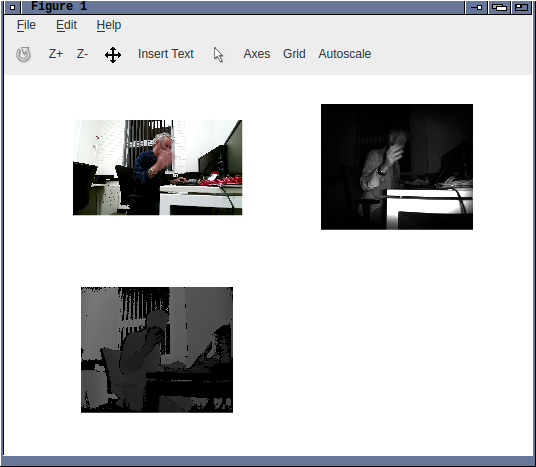About Me
Michael Zucchi
B.E. (Comp. Sys. Eng.)
also known as Zed
to his mates & enemies!
< notzed at gmail >
< fosstodon.org/@notzed >

Not quite a new computer!
Well I decided I'm sick of piss farting about thinking about a new
computer so I would just go and buy the bits to build one. And I
was looking forward to having something to do on the weekend.
But for various reasons I wanted to pay cash and of course an
online shop-front doesn't have that option, so I email the
retailer regarding the list of items i'd arrived at. Do they have
them on hand, are they compatible, that sort of thing.
But alas, still no reply two days later.
So that bummed me out.
Then I looked at another retailer in another state, but they don't
sell a single 32GB memory kit that's present in tested memory list
for the only suitable motherboard they have. I'm after an itx
board so that severely limits the options.
So that bummed me out further and I decided I'd just walk in to
the first shop I tried and just go buy it in person.
Unfortunately I ran into a mate who I haven't seen in yonks so I
just ended up catching up with him all afternoon and never made
it.
And now i've got a hangover and what was really just an impulse
buy has turned into a hassle and so I guess it's off the table for
this weekend at least. Maybe next week.
I'll probably still just end up going to them if i've still got a
pocket full of cash because the retailer options are so limited in
this tiny city. If they're still in business anyway, they don't
seem to be too keen on making money. The chips will only get
better althgough RAM is volatile so who knows there.
For what it's worth this is what I came up with:
- AMD Ryzen 3700X
- 32GB 3200C16 RAM 2x16GB
- 1TB Samsung 970 EVO NVMe SSD
- MSI B450I Gaming Plus AC.
The motherboard is the only ITX available that I can find here (or
really, anywhere in the whole country in ready supply), but at
least this shop says the BIOS is already upgraded. I've already
got a power supply. The aim would be to build a case ... but it's
a bit involved so I may never get around to it and i've got some
old shit lying around I can use in the mean time. GPU is a bit of
a pain, really I just want a short 1 or 2 slot AMD card (for the
proper free software linux drivers). Rare as fucking hens teeth
here though, the shop I was going to has had no AMD graphics cards
at all for months until the 5700 came out and now that's all they
have. No one else local has anything below RX 580 nor any of the
workstation line which would do, if a little pricey. I have an
old HD 5770 that i'll use to start with. It's a double pain if i
build my own case as I need to make sure whatever i end up with
will fit. And if i get a new one it may as well be the latest
design. I'll probably have to order online, whatever I decide.
Primary Tool Upgrades
I've been looking for a new keyboard for a while. My venerable
old (old!) litetouch honeywell keyboard has finally worn itself
out. I tried cleaning it but that probably just damaged the
contacts further. It's a really amazing design, no screws in the
whole thing, the contacts are just printed on a thin plastic sheet
that folds over itself, and the springs are just a single silicone
overlay which sits over it. Virtually silent and yet the keys
have a very positive bump action. Each row of keys is a single
injection moulded piece - almost like the way a plastic aeroplane
model comes - that clips off the base. You can just unclip them
all and chuck them in the dishwasher!
It still works but the left quarter is a bit finicky if you don't
press hard enough. Many of the clips which are part of the
injection moulded parts have snapped off. Some for example held
down the contact between the keyboard sheet and PCB which houses
the MCU and LEDs so the contact isn't as solid as it used to be.
I actually semi-retired it some years ago, i've just been using it
on a secondary machine here.
Real pity, just comparing the key feel now it's still amazing for
the keys that still work, but C and A mis-firing often enough to
become obnoxious and it just can't be repaired. I can't even
remember how I ended up with it or even when, I certainly didn't
buy it. I think I got it through a mate (Jamie) who collected
piles of computer shit. It seems to have been made in 1991! I
was still using a C64 in 1991, my first year at uni.
Anyway i looked around a bit and didn't bother doing anything
about it for months until last Friday when I ordered a couple of
"ducky one" keyboards online. Only one shop in Australia seems to
sell them, albiet in 600km away (i.e. the nearest next
town). Locally you can only get microsoft keyboards or some RGB
"gamer" monstrosities at exhorbitant prices.
I don't really know anything about them, or what appears to be a
whole computer sub-culture regarding 'mechanical' keyboards.
But I liked the idea of a keyboard with no markings, i've worn a
few off over the years so this should be immune to that at least!
Actually from a sitting position you can read the front face of
the keys not covered by your hands anyway. It was also a bit
cheaper. I also really liked the idea of the `ten-key-less' design -
I've always found the numpad a fucking pointless desk-waster.
The description of the `brown' switches are soft but with a bump -
but they're not quite as positive as the litetouch was though, and
definitely much louder particularly when they bottom out. If my
sister ever types on it she'll make a racket as she really thumps
the keys and types like she's on a mechanical typewriter (on which
she learnt).
And this one really just because I liked the colours. It's quite
pretty! This is a newer design and feels a little softer and
quieter but i haven't used it much yet.
They both come with a couple of extra key caps in contrasting
colours (pink for the black one), although a few of the keys are
for the non-existent numpad. They're both fairly heavy and very
solid, basically no flex in the body.
I'm still getting used to the tiny differences even though the
layout and dimensions are identical to the keyboards I was using.
Probably the main difference is that the very top of the key is
slightly smaller so they have larger gaps in between, it just
throws out my touch enough but it wont take long to get used to
them. Oddly I end up not making typos so much as typing a
completely different word? I mostly type on my work laptop
anyway, whose keyboard isn't fantastic but it's adequate.
My desks are always full of shit so the smaller size is handy as
well.
I wouldn't have minded a bit more of a positve feedback on the key
presses, but I guess I will get used to it and they aren't squashy
at least. I suppose i'd better, the pair of them cost $250, but
given the amount of time I spent on the damn machines it's
justifiable. I only really needed one but this saves more desk
space, and maybe i'll take one to work if i ever spend enough time
there.
Another tool looking to be upgraded is my home machine. I'm
thinking of getting a ryzen 3K system at some point, but i'll
probably umm and ahh over that for months more yet - or just spend
on a whim. The X570 boards are just too overpriced and there's
basically no ITX boards to be had either.
Update 21/7/19: Short mini-review. I've been using the
D1-2 (the blue one) on my home machine enough to get used to it.
In a word: very good. I was at work using a keyboard that I
thought was ok before (a HP workstation keyboard, one of the flat
square-keyed ones) but it felt like typing on soggy bread -
although this was the project managers keyboard and not my pc of
the same, and well, he eats at his desk.
Improved post navigation links
I've made a minor improvement
to blogz so that when viewing a
single post the navigation links at the bottom of the post show
the title of the next/previous post rather than just saying 'Older'
or 'Newer'. This was something I had intended to add when I got
the database backend working but that is still in limbo. Actually
most of the code for the blog output is done, I just can't decide
on relatively unimportant details like the serialisation format
for the metadata records. The other issue is adds a whole mass of
potential complexity to creating posts rather than just editing a
file on a shell login. Like an order of magnitue of complexity.
It doesn't require this complexity but it enables it.
I made some other minor changes to the stylesheet mostly to do
with inline figures (photos and captions), justified the text of
posts, and messed about with the About box.
Reading multi-stream high-depth videos in octave (and matlab)
So I discovered recently that octave and matlab support direct
calling out to Java. We had a need to read both multi-stream and
high bit-depth videos from them, and using jjmpeg seemed a lot
easier than writing some mex shit. The native video format
support in matlab is abysmal and it simply has no capability for
reading multi-stream videos either.
Anyway, i've just commited some stuff to jjmpeg
in contrib/octave.
It consists of a simplified multi-stream VideoReader and a small
set of octave.m files which ease it's use and make it portable.
And a Makefile to compile this using a Java 8 JDK because those
tools are so wildly out of date.
The .jar file and octave scripts are portable to matlab.
Althhough the license means they cannot be distributed, I think.
Since the freenect2 indev patches were not accepted into ffmpeg I
will add them and probably the kinect2 indev patches to
jjmpeg/contrib as well. At some future point in time.
ZedZone sitemap.xml
I've added a sitemap.xml to the site.
Maybe that'll make google consider adding it to it's index as it's
only indexing 130 odd pages out of 1K+. bing is probably a lost
cause, it's only indexed 10 pages.
It's a
patch to blogz which
generates both the short (id only) and long (date-title) urls as
well as a sitemap for the few plain html articles which mostly
cover the project home pages.
I also noticed some very old url's were being accessed so I added
a redirect from /blog?post=xx to /post/xx. Huh now i think of it
/blog?post=xx was blog by date, but no matter, it's good enough.
Been a bit sick and not really on top of it the last few days.
incremental javac, make
I've been looking into incremental javac compilation again. I had
most of the code for one approach done weeks ago but it never
really got to the point of doing anything useful.
The goal is to simplify a GNU make based Java build system while
ensuring consitent and complete builds.
javac -m <module> comes very close to what I
want but the main problem is that it doesn't remove stale files.
These come about for the same reasons that might occur with C
development, for example the .java file is renamed or deleted.
But there are many more cases that occur regularly in Java, for
example an inner class or anonymous inner class is removed or
renamed. And in C these aren't such an issue since a link line or
whatever is just going to ignore any stale files anyway but with
Java you can't easily calculate all the possible .class files
(without recompiling the source) so you just grab all the files in
the directory when creating a jar or module, so you don't want
stale ones lying about.
So far i've created a tool called ijavac that uses
the --module-source-path only to automatically find
all source files that need recompiling. It optionally supports
per-module mode where it restricts processing to in-module
classes. It also automatically removes all stale files before
they are recompiled. It works by parsing all the existing .class
files, matching them up with their source based
on --module-source-path and checking timestamps. The
parsed .class files are used to create the full set of down-stream
dependent classes, then match them to the corresponding set of
.java files, and then invoke javac with this set.
In per-module mode it isn't quite as fast as using javac -m, but
it's close and it ensures stale files are removed. Because it's
only performing file-level dependencies it can recompile more than
is necessary. In whole-project mode it depends on what was
changed and how many files could need recompiling. However i'm
not sure I can fit this in with my build system as I want to
support generated files which may require a per-module build
order.
There are also cases where module mode fails, regardless of
whether the stale files are removed or not. For example:
// module a
public class Bob {
int x;
}
// module b
public class Foo {
Bob bob;
int baz() {
return bob.x;
}
}
If x is renamed in class Bob then a per-module rebuild will only
rebuild Bob.class. Subsequently running a dependency-aware module
build on module b will not recompile Foo.
The whole-project mode will catch this case succesfully assuming a
per-module build hasn't already updated Bob.class independently.
Although if you have a deeply dependent object (that is used
widely in a project) it's about the same speed just to delete all
the classes and rebuild them all together.
The main reason is that the per-module mode restricts it's view to
only in-module classes and sources. I guess it should be able to
handle cross-module checks with some additional work.
Another idea i'm toying with is creating a cleanup routine that is
run as a post-process after javac -m. Becasue this
only needs to match each .class with a .java it doesn't have to
worry about building the whole dependency graph and can get away
with only parsing the Source attribute. I'm not sure why javac -m
doesn't expunge stale files but alas it does not.
I also have the code to generate the module-level dependency lists
which is what would go into a makefile. The makefile wouldn't
track .class files as one would with C.
But for now i'm not sure I really got anywhere so I guess it'll
just go on the backburner again.
Apparently 'best practice' using maven is just to delete and
rebuild every time which is nonsense.
Kinect2 device for FFmpeg, Microsoft Kinect for Windows SDK 2.0
So further on the previous post about Kinect for Microsoft Windows
v2 support in ffmpeg ...
- My patch to ffmpeg-devel was completely ignored. Not even the
courtesy to say it wasn't welcome due to it being obsolete
hardware or any other comment whatsoever.
- My patches to libfreenect2 also seem to have been simply
ignored.
- I couldn't get libfreenect2 to work on microsoft windows 10.
It compiles and in some cases detects the camera but bulk
transfers always timeout. I tried everything!
- Using the libusb.dll in the binary download. This detects
but transfers timeout.
- Using visual studio to compile the libusb.dll. Doesn't
work at all.
- Using visual studio to compile libfreenect2 and a very
basic capture program but uses the libusb.dll from
libfreenect2 distribution. This only works if i put a couple
of Sleep() calls in the right place. Otherwise it also fails.
- Adding Sleep() calls in the ffmpeg module just times out.
- So I wrote a C dll to wrap the microsoft sdk so it could be
called from gcc compiled code as c++ has no ABI so there it can't
call it directly.
- Then I wrote another simple ffmpeg device 'kinect2' which uses
this C dll to capture on a microsoft platform.
- Due to delays in processing this locked up the capture when
trying to record all streams so I needed to use a capture thread
and dump copies of the frames to a limited-size write queue.
This works and is stable but is microsoft platform only. The
colour signal comes through as YUYV so it needs to be recompressed
for saving vs the libfreenect2 indev which supported raw jpeg
capture, so it takes considerably more cpu resources using a
software codec. Also the C dll can only be compiled with visual
studio as the Kinect headers (apart from being an auto-generated
unreadable mess) are are not standard C or c++ compatible. But
ffmpeg is still cross-compiled from a proper development system.
The c++ kinect sdk isn't too bad - apart from all the COM
overheads and unredable headers. The documentation is abysmal.
This is the first time iv'e ever used visual studio for C or c++,
and hopefully the last, it's pretty pants.
Given my shitty experience with ffmpeg-devel I probably wont
bother even submitting a patch for it there. If I decide to
publish it at all I might send a link to ffmpeg-devel just to get
some exposure.
I've found that it's almost impossible to find this site with any
search engine even if you look for something specific so it's
pretty pointless publishing it here anyway. Yesterday I was forced
to login to bing and google's search consoles to find out what the
hell was going on. bing has only indexed about a dozen pages and
google has indexed the site but barely ever shows anything, and
some of what it shows (10+ pages in) is dead links from previous
iterations of the blog software. A few months ago I added jjpeg
and zcl (at least) to the GNU Free Software Directory ... and even
there the jjmpeg entry has been sitting at 'not approved' ever
since and doesn't show the anything unless you dig further.
I've seen people asking on the microsoft developer forums for a
piece of software which does exactly this - mostly from academic
users - but if they can't find it what's the bloody point?
Kinect2 device for FFmpeg, libfreenect2
I've been working on a kinect2 device backend for FFmpeg the last
few days. Actually it's only about a day's work so far and i've
got the code talking to the c++
(sigh) libfreenect2,
building, and most of the glue written - I just haven't tested it
with the hardware yet. I hope it should be quite straightforward
but FFmpeg is a fairly complex library and there are a lot of
details that could be wrong.
One feature it has is that the jpeg frames are not decoded; which
means cheaper recording and no loss of capture quality. I had to
make some minor modifications to libfreenect2 for this to be possible.
It exports 3x streams: the RGB data as jpeg, the IR data as
grey16, and the depth data as grey16. I have options to enable
various subsets of these streams, so for example depth+ir decoding
can be skipped as it requires a good amount of flops. Cameras are
referenced by serial number or index. Device queries work as do
some basic capture settings. I'm also considering other options
which libfreenect2 provides such as streams with the depth/rgb
aligned to each other.
Once I have it at a working state and ported to git head (FFmpeg
git was down when i started working on it) I will see if FFmpeg is
interested in it. The fact that it requires c++ and a patched
libfreenect2 might be a downside but there is already a c++ device
in the source tree. Otherwise i'll just upload it
to code.
This was going to be for work but they decided they'd rather use
some junk matlab (ffs) on a shit platform (fffs) so i'm a little
annoyed about the whole thing. While it should be possible to get
this to work on their chosen shit platform as well it's a bit more
involved.
Copyright (C) 2019 Michael Zucchi, All Rights Reserved.
Powered by gcc & me!
